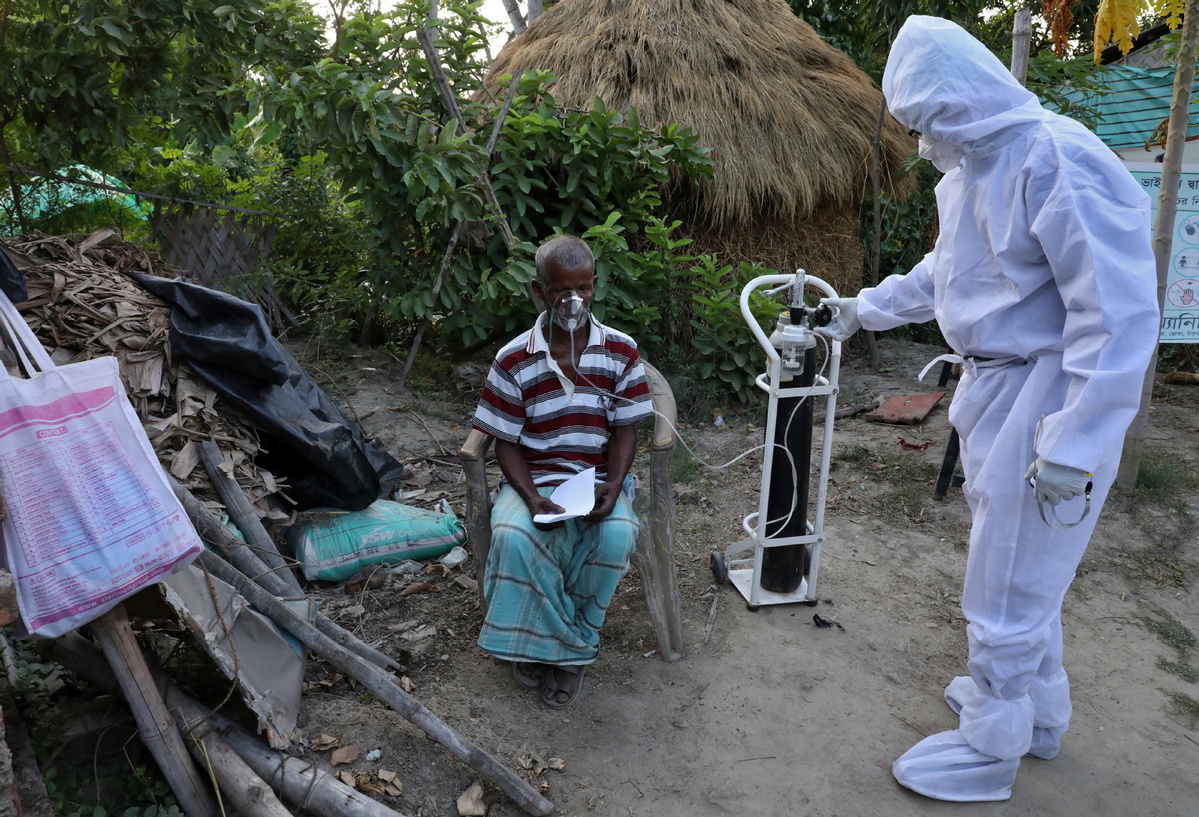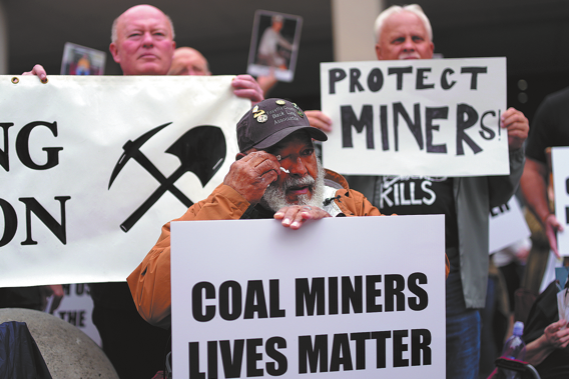Pandemic on the move to rural areas of India


Uncounted cases among concerns of far worse situation than govt statistics show
A decline in daily confirmed cases of COVID-19 has prompted speculation that India's second wave of infections may have crossed its peak, but some public health experts warn a new horror story may be unfolding as the virus makes deep inroads into the country's rural areas.
The major concern among those experts is the spread of the coronavirus to villages, most of which are not equipped either to test or to cope with patients hit by the disease. Health Ministry data showed that new hot spots have emerged in northeast India where infections continue to surge.
Superstition, lack of proper treatment, and poor healthcare infrastructure in rural areas have caused a surge in deaths among COVID-19 victims, said Amitava Nandy, an infectious disease specialist and former head of the Calcutta School of Tropical Medicine in India.
Tanmay Mahapatra, an epidemiologist and doctor who works with the nongovernmental organization CARE India in Bihar state, said nearly 70 percent of districts in India were reporting 100 or more new coronavirus cases in the past few days along with high daily casualties.
Cases in rural areas are often going uncounted or underreported, meaning the real situation can be far worse than what official statistics suggest.
For example, a village in Gonda district in Uttar Pradesh, the most populous state in India, has seen a family lose five members in a space of just 20 days. A village near New Delhi has seen consecutive deaths.
"It seems that the worst fear is coming true. In all likelihood, such deaths in villages are going largely unreported," said Anup Sinha, a well-known economist in India.
Many such cases are striking families living in other key states such as Bihar, Jharkhand, Madhya Pradesh, Chhattisgarh and Assam.
Though there is no conclusive proof these were COVID-related deaths, the symptoms of those who died were all too evident, the health experts said.
India reported 222,315 new confirmed COVID-19 cases on Monday, the lowest in a month, the Indian Health Ministry said. On May 7, the ministry reported the highest number of such cases at 414,188. The overall total stands at nearly 27 million, with more than 303,700 deaths.
Downward trend
Lav Aggarwal, an official in the federal health ministry, said on May 18 a total of 199 districts in the country have been showing a continued decline in both daily active COVID cases and positivity rates the past three weeks.
After crossing the 400,000 mark for the first time on April 30, the daily count of cases has dropped significantly. But the number of deaths continued to hover around 4,000 a day the past three weeks.
During a virtual meeting with provincial and district officials on Thursday, Indian Prime Minister Narendra Modi called for an urgent strategy to "ensure rural India is COVID-free".
That is no easy task, given the limited resources in the countryside.
"The manpower resources and tools and other facilities in villages are nowhere near what is urgently needed to combat a pandemic of this scale," said Mahapatra.
The absence of RT-PCR testing labs, doctors, trained nurses, oxygen, and ICU beds are the main challenges, he said.
Villages have small healthcare centers. Qualified doctors are virtually nonexistent.
"A majority of the people are dying without oxygen. The situation is very alarming," said J. A. Jayalal, national president of the Indian Medical Association.
"Unless there is an urgent, aggressive and united move by all concerned, things will go out of control. With virtually nonexistent infrastructure in most villages in India, the only hope is vaccination," he said.
Xu Weiwei in Hong Kong and agencies contributed to this story.
Arunava Das and Aparajit Chakraborty are both freelance journalists for China Daily.
































